Key Takeaways: In-the-Ear vs On-the-Ear Hearing Aids
Here’s a detailed comparison table summarizing the key points discussed in the blog:
| Feature | In-the-Ear (ITE) Hearing Aids | On-the-Ear (RIC/BTE) Hearing Aids |
|---|---|---|
| Design | Custom-molded to fit inside the ear canal; discreet and compact. | Larger, sits behind or on top of the ear with external components. |
| Visibility | Nearly invisible; ideal for users seeking discretion. | More noticeable due to placement behind the ear. |
| Comfort | Snug fit but may cause discomfort during prolonged use. | Generally more comfortable for extended wear due to external placement. |
| Sound Isolation | Excellent sound isolation as they sit deeper in the ear canal. | Broader soundstage with advanced sound processing technology. |
| Battery Life | Shorter battery life due to smaller size. | Longer battery life; supports rechargeable options. |
| Durability | More prone to damage from earwax and moisture. | Designed to resist earwax and moisture, making them more durable. |
| Technology Features | Limited space for advanced features, though premium models include Bluetooth and rechargeability. | Larger size accommodates advanced features like Bluetooth, noise cancellation, and app controls. |
| Hearing Loss Suitability | Suitable for mild to severe hearing loss. | Suitable for mild to profound hearing loss; more amplification options available. |
| Lifestyle Compatibility | Best for users prioritizing discretion and occasional use. | Ideal for active users or those requiring robust, long-term solutions. |
| Maintenance | Requires regular cleaning to prevent wax buildup. | Easier maintenance due to external placement of key components. |
| Cost Range | Typically more affordable but varies with premium features. | Higher cost range due to advanced technology and durability. |
This table provides a quick overview of the differences between in-the-ear and on-the-ear hearing aids, helping you decide which option aligns best with your needs and lifestyle preferences.
Table of Contents
In-the-Ear vs On-the-Ear Hearing Aids: Which One is Right for You?
Hearing aids have come a long way, offering advanced features and designs to suit different preferences and hearing needs. Among the most popular styles are In-the-Ear (ITE) and On-the-Ear (RIC/BTE) hearing aids. But how do you decide which one is best for you? Let’s explore these two options to help you make an informed choice.
What Are In-the-Ear (ITE) Hearing Aids?
Definition and Design
In-the-Ear (ITE) hearing aids are custom-made devices that fit snugly inside your ear canal. They are designed to be discreet, blending seamlessly with your natural ear shape. These hearing aids come in various styles, such as:
- Completely-in-Canal (CIC): Almost invisible, fitting deep inside the ear canal.
- Full-shell ITE: Covers the entire bowl of the outer ear.
Key Features
- Compact and lightweight design.
- Custom-molded for a comfortable fit.
- Ideal for mild to severe hearing loss.
Advantages of ITE Hearing Aids
- Discreet Appearance: Since they fit directly in the ear canal, they are less noticeable than other types.
- Natural Sound Quality: Their placement helps capture sound naturally, enhancing clarity.
- Ease of Use: No external parts mean fewer adjustments during daily wear.
Drawbacks of ITE Hearing Aids
- Battery Life: Smaller size means smaller batteries, which may require frequent replacement.
- Vulnerability to Damage: Earwax and moisture can affect their performance.
- Comfort Issues: Some users may feel discomfort during prolonged use.
Popular ITE Products
Here are some great options if you’re considering ITE hearing aids:
- Signia Intuis 3 Custom ITE Essential Hearing Aid
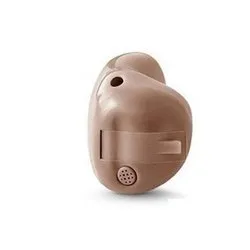
Price: ₹26,990
A budget-friendly option with essential features for everyday use. - Signia Insio 3px ITE Primax Hearing Aid
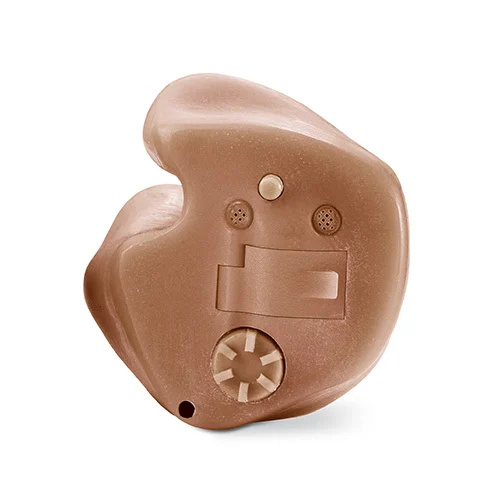
Price: ₹44,990
Offers advanced sound processing for clear audio in noisy environments. - Signia Active Pro X ITE Xperience Hearing Aid
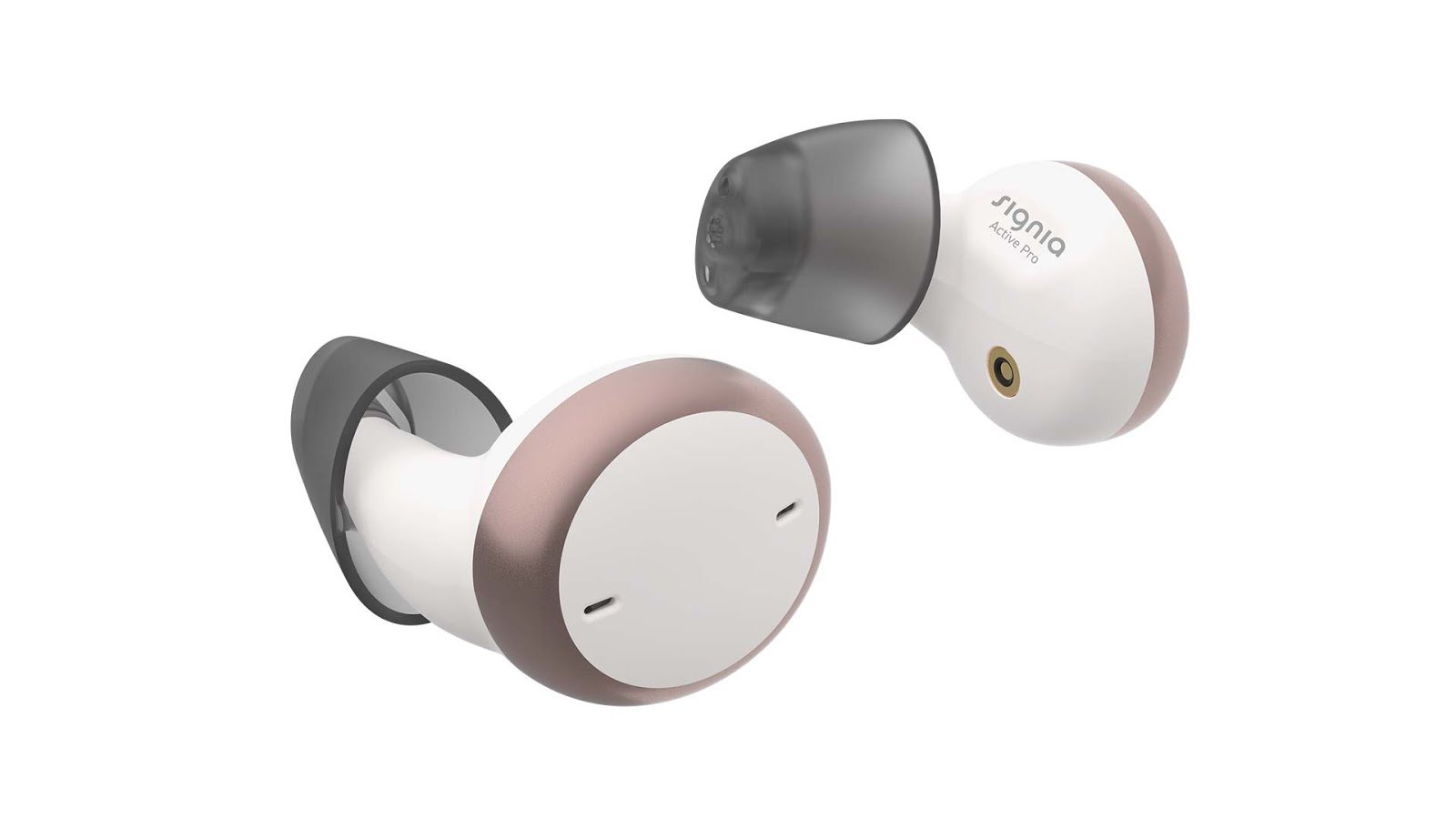
Price: ₹2,99,990
A premium option with Bluetooth connectivity and rechargeable batteries.
What Are On-the-Ear Hearing Aids?
Definition and Design
On-the-Ear hearing aids include styles like Receiver-in-Canal (RIC) and Behind-the-Ear (BTE). These devices have a small case that sits behind or on top of the ear, connected to an earpiece that fits inside the ear canal.
Key Features
- Larger size allows for more advanced features like Bluetooth streaming and rechargeable batteries.
- Suitable for mild to profound hearing loss.
- Durable design that resists moisture and earwax better than ITE models.
This is just the beginning of our comparison! Stay tuned as we dive deeper into how these two styles stack up in terms of comfort, sound quality, and lifestyle compatibility in the next sections.
What Are On-the-Ear Hearing Aids?
Definition and Design
On-the-ear hearing aids, often referred to as Receiver-in-Canal (RIC) or Behind-the-Ear (BTE) devices, are designed with a small case that rests behind or on top of the ear. This case connects to an earpiece placed in the ear canal via a thin tube or wire. These models are known for their versatility and ability to accommodate a wide range of hearing loss levels, from mild to profound.
Key Features
- Larger size compared to in-the-ear models, allowing for advanced features like Bluetooth connectivity and rechargeable batteries.
- Suitable for individuals with varying degrees of hearing loss.
- Durable design that resists moisture and earwax better than ITE models.
Advantages of On-the-Ear Hearing Aids
- Advanced Features: These devices often come equipped with Bluetooth streaming, directional microphones, and noise-cancellation technology.
- Longer Battery Life: The larger size allows for bigger batteries, which last longer than those in ITE models.
- Durability: On-the-ear designs are more resistant to damage from moisture and earwax buildup.
- Comfort for Extended Use: The external placement reduces the risk of discomfort during prolonged wear.
Drawbacks of On-the-Ear Hearing Aids
- Visibility: These devices are more noticeable than ITE models due to their placement behind the ear.
- Bulkiness: Some users may find them less secure during physical activities or less aesthetically pleasing.
Comparison: In-the-Ear vs On-the-Ear Hearing Aids
When choosing between these two styles, it’s essential to consider your lifestyle, comfort preferences, and hearing needs. Let’s break it down:
| Feature | In-the-Ear (ITE) Hearing Aids | On-the-Ear (RIC/BTE) Hearing Aids |
|---|---|---|
| Design | Discreet, fits inside the ear canal | Larger, sits behind or on top of the ear |
| Comfort | Custom fit but may cause ear fatigue | Generally more comfortable for long use |
| Sound Quality | Excellent sound isolation | Broader soundstage with advanced tech |
| Battery Life | Shorter due to compact size | Longer battery life |
| Durability | Prone to earwax/moisture damage | More robust against external factors |
| Suitability | Mild to severe hearing loss | Mild to profound hearing loss |
Popular On-the-Ear Hearing Aid Options
If you’re leaning towards on-the-ear hearing aids, here are some excellent options worth exploring:
- Signia Pure Charge & Go 7X Rechargeable RIC Xperience Hearing Aid

Price: ₹3,31,990
This premium model offers advanced sound processing and Bluetooth connectivity, making it ideal for tech-savvy users. - Signia Kit Styletto 3AX Slim-RIC Augmented Xperience Hearing Aids

Price: ₹3,25,990
Known for its sleek design and powerful performance, this model is perfect for users who value both aesthetics and functionality. - Signia Intuis 3 RIC 312 Essential Hearing Aid
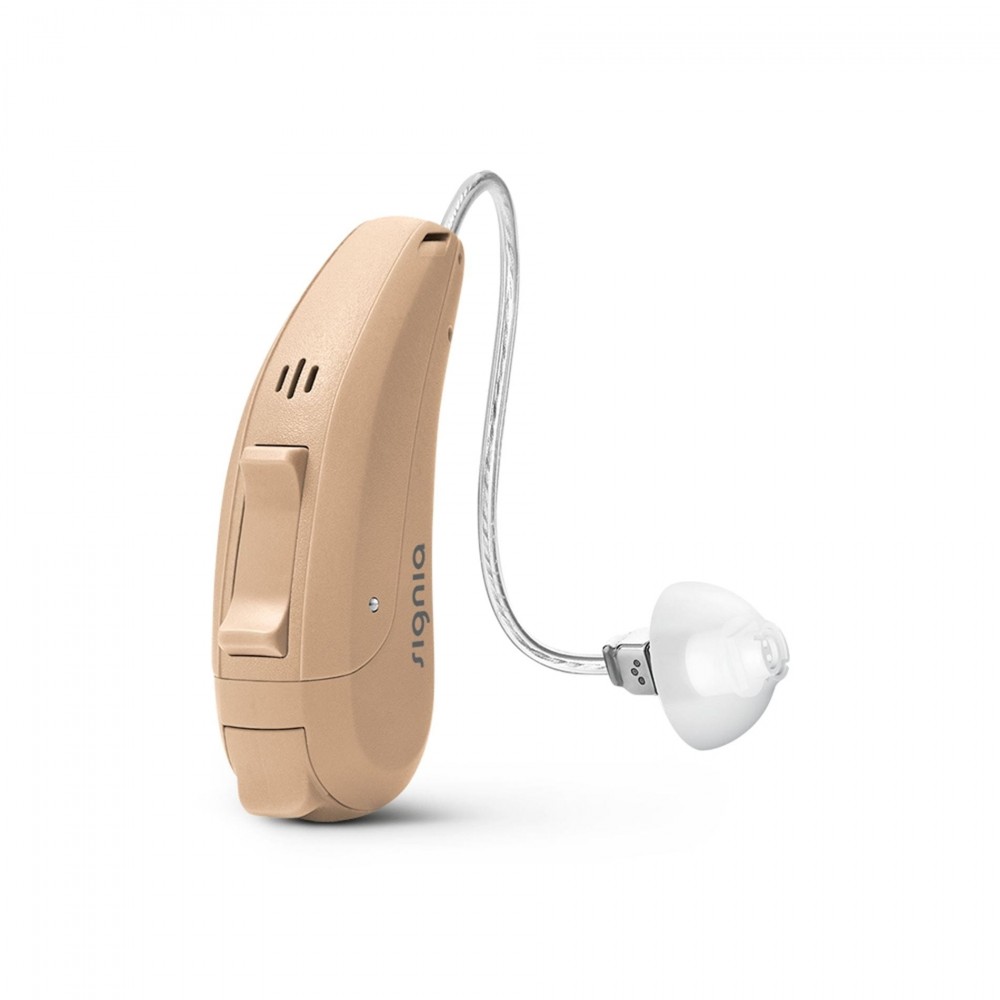
Price: ₹25,990
A budget-friendly option that doesn’t compromise on essential features like clear sound quality and durability.
In the next section of this blog, we’ll explore how these two styles compare in terms of lifestyle compatibility and technological features. Stay tuned!
Factors to Consider When Choosing Between In-the-Ear and On-the-Ear Hearing Aids
Choosing the right hearing aid depends on several factors, including your lifestyle, comfort preferences, and degree of hearing loss. Let’s break these down to help you make an informed decision.
Lifestyle Needs
- If you lead an active lifestyle or spend a lot of time outdoors, on-the-ear hearing aids might be a better choice. Their durability and resistance to moisture and earwax make them ideal for such conditions.
- On the other hand, if you prioritize discretion and prefer a device that’s nearly invisible, in-the-ear hearing aids are a great option.
Hearing Loss Severity
- For mild to severe hearing loss, both styles can work effectively. However, on-the-ear hearing aids are often recommended for profound hearing loss due to their ability to house larger amplifiers and more powerful technology.
Comfort and Fit
- In-the-ear hearing aids are custom-molded to fit your ear canal, providing a snug fit that some users find more comfortable.
- On-the-ear hearing aids, with their external placement, tend to feel less intrusive and are often preferred for extended use.
Technology Features
- If you’re looking for advanced features like Bluetooth streaming, rechargeable batteries, or directional microphones, on-the-ear models typically offer more options due to their larger size.
- Some premium in-the-ear models, like the Signia Active Pro X ITE Xperience Hearing Aid, also include features like Bluetooth connectivity and rechargeable batteries.

Popular In-the-Ear Hearing Aids
If you’re leaning toward in-the-ear models, here are some excellent options:
- Signia Insio 7Nx ITE Hearing Aid
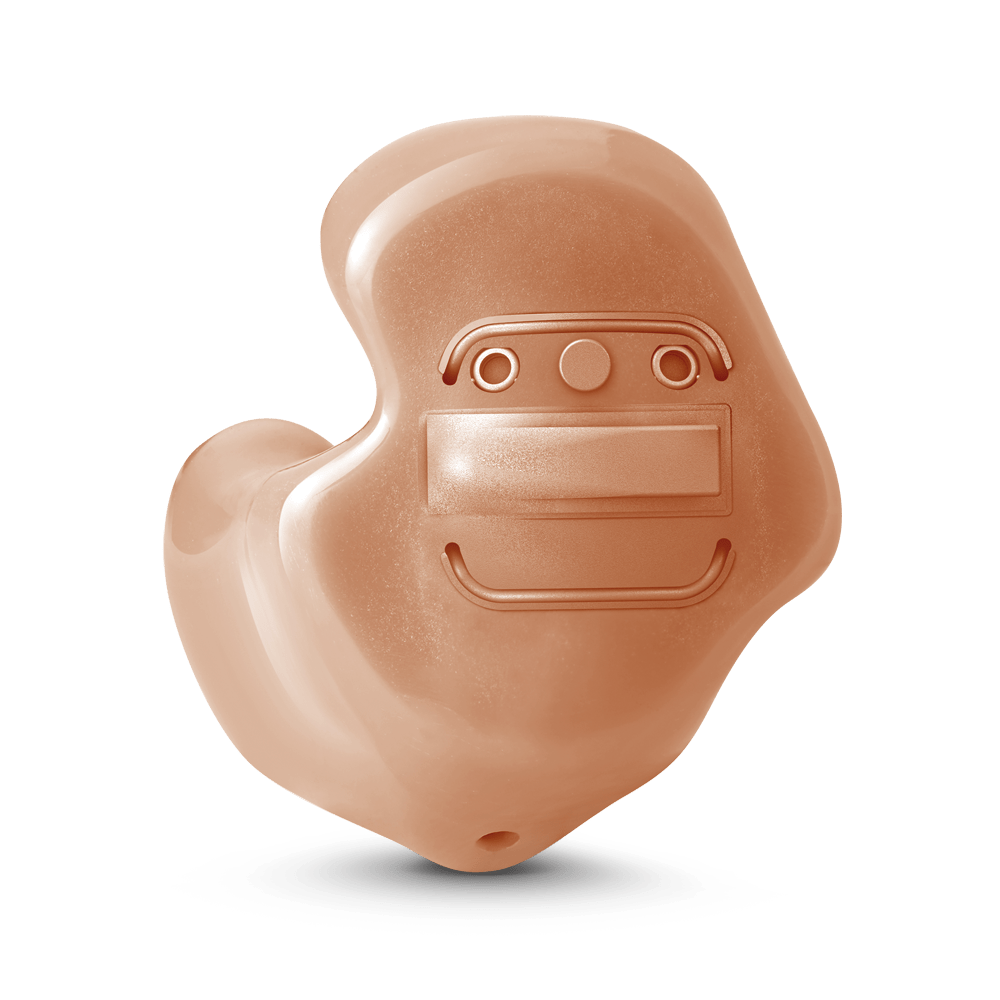
Price: ₹2,99,990
This premium model offers exceptional sound clarity and advanced noise reduction technology. - Signia Insio 3px ITE Primax Hearing Aid

Price: ₹44,990
A mid-range option with excellent sound processing capabilities. - Signia Intuis 3 Custom ITE Essential Hearing Aid

Price: ₹26,990
A budget-friendly option that doesn’t compromise on essential features.
Popular On-the-Ear Hearing Aids
Here are some top choices for on-the-ear models:
- Signia Pure Charge & Go 7X Rechargeable RIC Xperience Hearing Aid

Price: ₹3,31,990
This high-end model combines superior sound quality with Bluetooth streaming and rechargeable batteries. - Signia Kit Styletto 3AX Slim-RIC Augmented Xperience Hearing Aids

Price: ₹3,25,990
Known for its sleek design and powerful performance. - Signia Intuis 3 RIC 312 Essential Hearing Aid

Price: ₹25,990
A reliable and affordable option with clear sound quality.
Conclusion
Both in-the-ear and on-the-ear hearing aids have their unique advantages. The best choice ultimately depends on your individual needs—whether it’s discretion, comfort, advanced technology, or durability. Consulting with an audiologist can help you determine which style suits you best.
Remember to consider factors like your daily activities, degree of hearing loss, and preference for features when making your decision. With the right hearing aid, you can enjoy clearer sound and improved quality of life!
Read More
- Baumfield, A., and H. Dillon. “Factors affecting the use and perceived benefit of ITE and BTE hearing aids.” British journal of audiology 35.4 (2001): 247-258.
- Risberg, Donna M., and Robyn M. Cox. “Comparison of in-the-ear and over-the-ear hearing aid fittings.” Journal of Speech and Hearing Disorders 51.4 (1986): 362-369.

